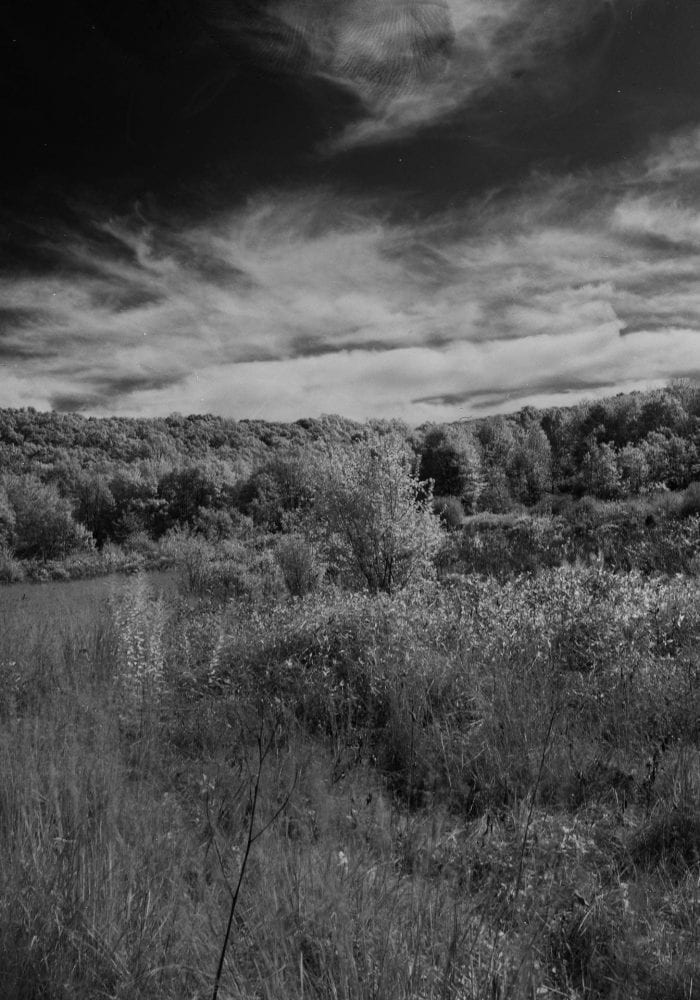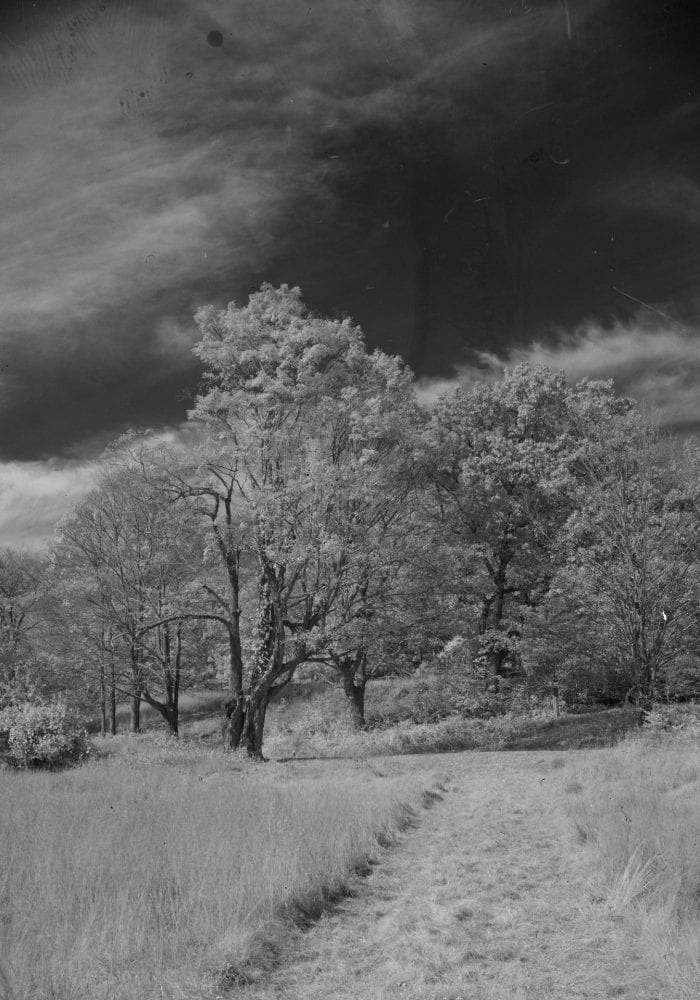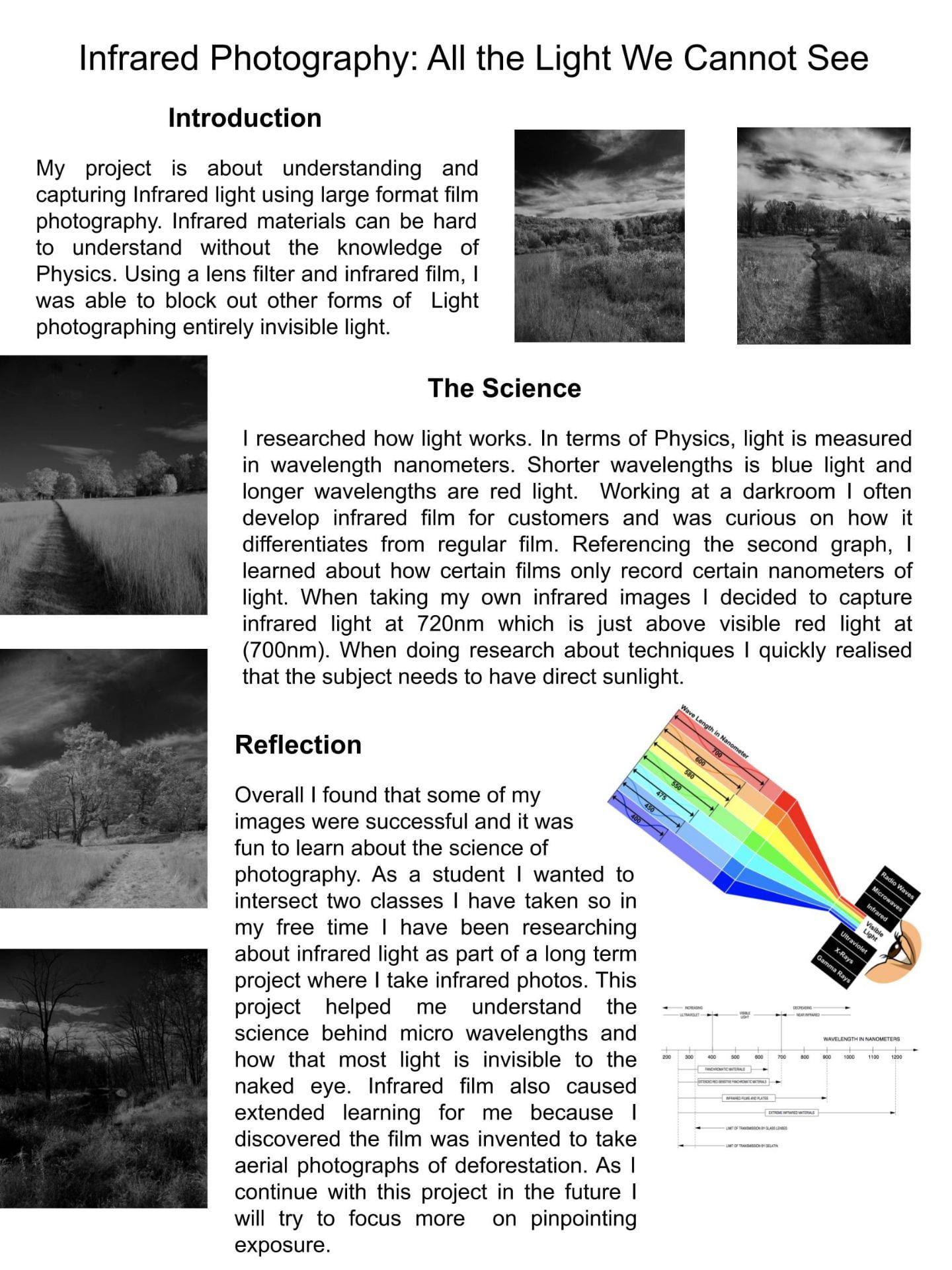Project by: George Boulukos (11th Grade)
Project Advisor: Susan Now
Student(s)’s Advisor(s): acarrol@lrei.org
For my Project I researched how light works. In terms of physics, light is measured in wavelength nanometers. Shorter wavelengths is blue light and longer wavelengths are red light. Working at a darkroom, I often develop infrared film for customers and was curious as to how it is different from regular film. Referencing the second graph (see below), I learned about how certain films only record certain nanometers of light. When taking my own infrared images I decided to capture infrared light at 720nm which is just above visible red light at (700nm). When doing research about techniques, I quickly realised that the subject needs to have direct sunlight.
=======================================================
PROJECT PROPOSAL
Please write a description of the project you are proposing. Why do you want to take this on, and what do you hope to learn?
Using rare infrared films, I will explore long exposure photography to understand how to capture other forms of light. I hoping to have a greater understanding of light, wavelengths, and the natural sciences.
Critical thinking, creativity, citizenship and courage are essential LREI learning values. Explain how you’ll draw on at least one of these values to complete your proposed project?
This project combines the sciences with large format photography, two topics I have interest in, and it will take a lot of research to achieve a proper infrared exposure.
What is your proposed outcome? How will you be able to demonstrate successful completion of this Project? How do you plan to share your learnings with the larger LREI community (e.g., exhibit of work, poster of learnings, performance, etc.)?
I am hoping to have ten 11×14 fiber prints.
Please provide a general outline that indicates your work plan for the trimester? What are some of the key project benchmarks (i.e., goals that will help to ensure that you finish the project)?
1. I will talk with science teachers to understand light waves
2. gather materials for capturing infrared images(infrared filter, infrared film)
3. Scout locations, and plan out the frames
4. produce images(expose film, develop film, print images on fiber paper)
When do you plan on meeting?
wednesday lunch








George, if you ever want to chat about the physics, come find me. Can’t wait to see the photos you produce.
approved and in progress
It would be interesting to take a photo in color and compare the same view with the infrared film, perhaps in the future.